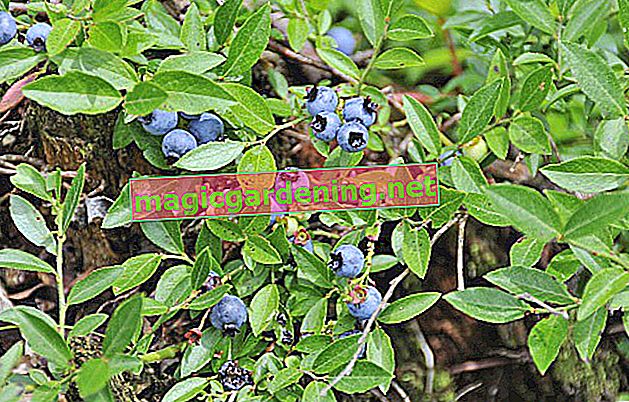
The special location requirements of wild blueberries
Forest blueberries grow mainly in bog areas where you should watch out for swampy spots and protruding roots when walking. Berries picked in the forest should never be eaten unwashed on site, as they can be contaminated with pathogens of the fox tapeworm, which is also dangerous for humans. If you want to grow wild blueberries in the fenced garden to avoid this danger, you will in most cases first have to replace a lot of soil material. Forest blueberries, like cultivated blueberries, need acidic soil with a pH value between 4.0 and 5.0 for healthy development. You can obtain this by making a more wide than deep excavation at the planned location and filling it with peat and similarly acidic soil substrates.
also read
- Buy wild blueberries as plants for the garden
- The best harvest time for fresh wild blueberries
- The season of the wild blueberries
Forest blueberries compared to cultivated blueberries
Even with the best care, you will never be able to obtain the large harvest quantities from the wild blueberry plants as you would with the specially grown cultivated blueberries. Since wild blueberries usually do not grow much taller than 40 centimeters, the number of fruits that ripen on the branches is also relatively limited. On the other hand, the fruits have a more aromatic taste than the larger cultivated blueberries and have the juice that is characteristic of blueberries and turns blue on the tongue and fingers. In contrast to the sun-loving cultivated blueberries, you should plant wild blueberries in partial shade. Once properly planted, wild blueberries, unlike cultivated blueberries, do not require any additional watering or cutting.
Forest blueberries as easy-care ground cover
Due to their extremely moderate growth in the long term and their natural ability to reproduce, blueberries are suitable for use as an inexpensive ground cover on shady garden areas and on embankments. If the conditions are good, wild blueberries reproduce in the following ways:
- Self-sowing
- Lowerers
- Runners
They shield the light from the ground and thus prevent the emergence of tall weeds. As a pleasant side effect, the fruits can be harvested right around the house in midsummer.
Tips & Tricks
Forest blueberries are rarely available as plants in gardening shops. Before you use wild plants from a piece of forest, you should definitely ask the forest owner or the responsible forestry office for permission.
 Blueberry hedge 'BERRYBUX®' 17.65 EUR Buy at baldur Blueberry
Blueberry hedge 'BERRYBUX®' 17.65 EUR Buy at baldur Blueberry  grape 'Reka® Blue' 9.8 EUR Buy at baldur Blueberry
grape 'Reka® Blue' 9.8 EUR Buy at baldur Blueberry  grape 'Reka® Blue' 7.84 EUR Buy at baldur
grape 'Reka® Blue' 7.84 EUR Buy at baldur








